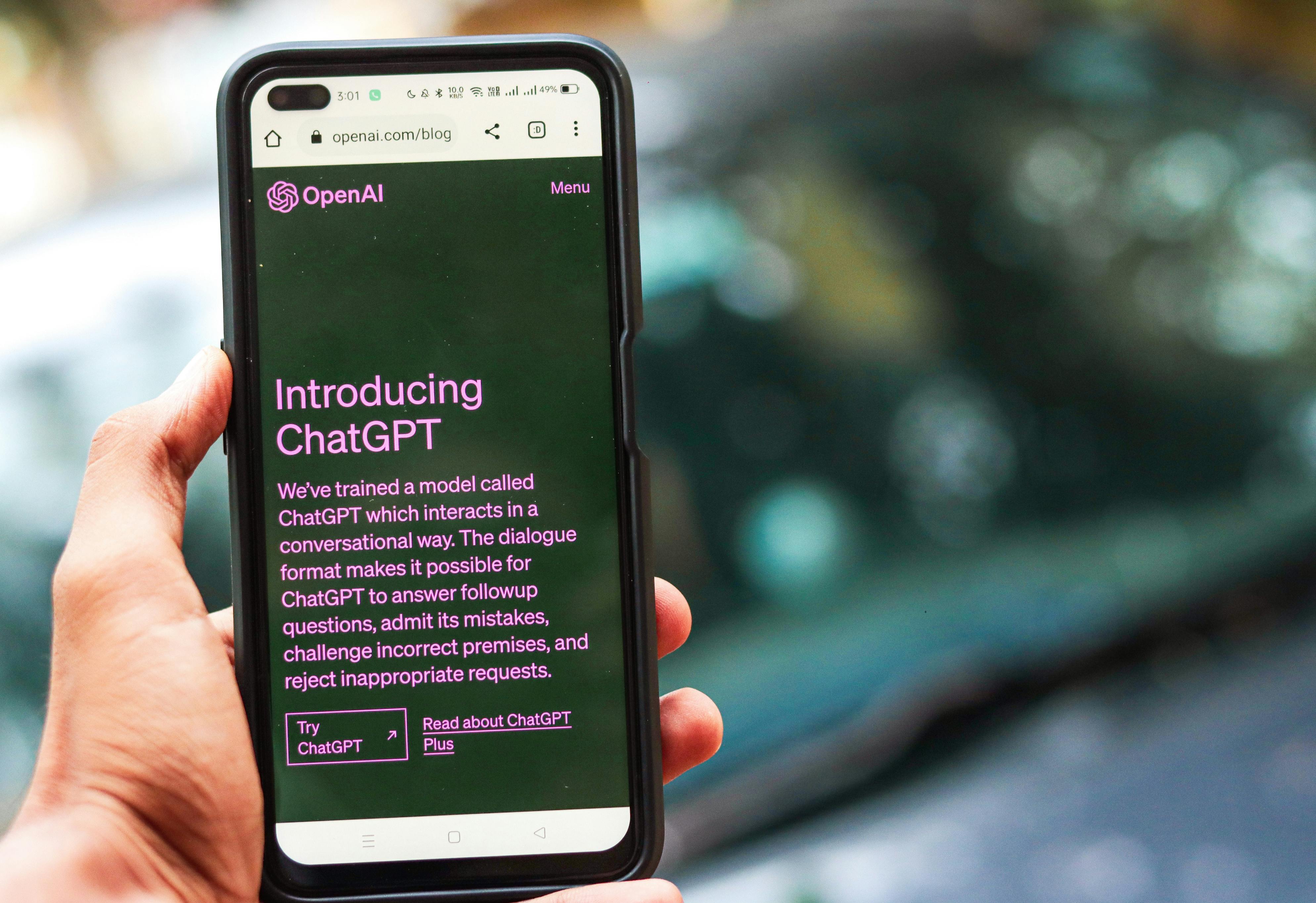
The Power of Traffic Bots: Revolutionizing Online Visibility
In the vast digital landscape, website traffic plays a pivotal role in the success of any online business or endeavor. Traffic bots, also known as web robots or simply bots, have emerged as a significant factor in this realm. So, what exactly are traffic bots and how do they work? Let's dive in.
At their core, traffic bots are software applications programmed to perform specific tasks on the internet, usually automated by algorithms. These programs simulate human behavior and interact with websites, generating traffic in the process. Although there may be legitimate use cases for traffic bots, often they are associated with less desirable activities.
Traffic bots can be broadly divided into two categories - good bots and bad bots. Good bots, such as search engine crawlers, help gather data for indexing websites or improve user experience by assisting with customer support. On the other hand, bad bots aim to manipulate web traffic for various purposes, often exploiting vulnerabilities or engaging in fraudulent activities.
One method by which traffic bots function is through "click fraud." Click fraud entails simulating multiple clicks on online advertisements with the intention of giving off the appearance of genuine interest. Advertisers may be led to believe that their exposure is higher than it actually is, leading to inflated costs and inaccurate performance metrics. By artificially inflating interactions, these bots trick ad networks into delivering revenue-generating ads.
Apart from click fraud, some traffic bots also engage in "referrer spam." These bots send false referral information to websites they target, making it appear as though visitors are coming from legitimate sources (e.g., well-known websites) when it is not the case at all. This tactic aims at improving search engine rankings or fooling website owners into visiting malicious sites.
Botnets — networks of infected computers compromised by malware — have also played a part in the propagation of traffic bots. Botnets can launch coordinated attacks flooding a website with large amounts of unwanted traffic, causing server overload and potential crashes. Traffic bots within botnets can exploit a vast pool of devices, making it challenging to mitigate their impact.
To identify and combat malicious traffic bots, various strategies have been developed. Captchas purposefully introduce challenges to prove human presence by asking users to complete specific tasks or recognize distorted images. Advanced analysis techniques can aid in distinguishing real visitors from traffic bots based on browsing behavior, IP addresses, or other characteristics. Additionally, web administrators and businesses often implement measures like rate limiting and filtering mechanisms to reduce bot-driven disruptions.
However, it is crucial to acknowledge that not all traffic bots are detrimental. Legitimate applications exist to assist businesses in testing website performance, data collection for analytics, or monitoring platforms for uptime. Such bots can provide valuable insights without malicious intent.
In conclusion, understanding traffic bots requires grasping their nature as software applications designed to automate internet-based actions. While some traffic bots exist to streamline online operations or provide insights, others operate with malicious intent to manipulate web traffic. Recognizing the distinction between good and bad bots empowers site owners and businesses to protect their interests and maintain a fair digital ecosystem.
 The Role of Traffic Bots in Enhancing Website VisibilityThe Role of traffic bots in Enhancing Website Visibility
The Role of Traffic Bots in Enhancing Website VisibilityThe Role of traffic bots in Enhancing Website VisibilityTraffic bots, also known as web robots or web crawlers, play a significant role in improving website visibility and driving traffic to specific online platforms. These automated tools simulate human activity by visiting websites, clicking on links, and interacting with various web elements.
One critical aspect is search engine optimization (SEO). Traffic bots are designed to crawl websites and provide valuable data that assists search engines in ranking websites. Search engines rely on these bots to index pages, understand website structures, and determine relevance for particular keywords.
Traffic bots aid website visibility by generating organic traffic. These bots simulate page visits, clicks on links, scrolling actions, and other interactions that replicate genuine user behavior. Such activities can help increase a website's visibility on search engine result pages (SERPs) and improve organic rankings over time.
Additionally, traffic bots contribute to the increment of website metrics. By artificially increasing visitor numbers, page views, and engagement metrics, traffic bots can make your site appear more popular and attractive to real users. This elevated activity can potentially lead to enhanced brand recognition and even the attraction of genuine visitors due to increased perception of credibility.
Furthermore, the presence of traffic generated by bots can improve click-through rates (CTR) when displayed alongside paid advertisements. As ads typically seek higher CTRs for better performance, the addition of bot-generated traffic can create the illusion of improved efficiency by boosting the click count.
Nevertheless, it is essential to note that there are both legitimate and malicious uses of traffic bots. While legitimate uses involve optimizing website visibility and attracting genuine visitors, malicious practices involve click fraud or spamming activities aimed at deceiving ad networks or skewing analytics data. Therefore, it is crucial to use traffic bots responsibly and steer clear of any unlawful practices.
Understanding the role of traffic bots in enhancing website visibility provides valuable insights into how these automated tools can support SEO efforts, drive organic traffic, and contribute to the overall success of an online platform. By utilizing them ethically and effectively, website owners can increase their chances of building a robust online presence and attracting genuine visitors to their sites.
 Difference Between Good and Bad Traffic BotsWhen it comes to traffic bots, there are clear distinctions between good and bad ones. A good traffic bot is designed to simulate human behavior and generate legitimate traffic to websites. On the other hand, bad traffic bots are created with malicious intent and can damage the website's reputation or disrupt its performance. Here are the key differences:
Difference Between Good and Bad Traffic BotsWhen it comes to traffic bots, there are clear distinctions between good and bad ones. A good traffic bot is designed to simulate human behavior and generate legitimate traffic to websites. On the other hand, bad traffic bots are created with malicious intent and can damage the website's reputation or disrupt its performance. Here are the key differences:1. Purpose:
- Good Traffic Bots: They aim to provide valuable and genuine traffic to websites, helping them increase visibility, engagement, and potential conversions.
- Bad Traffic Bots: They are developed for harmful purposes like generating artificial traffic, exploiting vulnerabilities, performing click fraud, spamming websites, or launching DDoS attacks.
2. Intentions:
- Good Traffic Bots: Their primary intention is to assist websites by boosting their user engagement metrics and enhancing organic search rankings.
- Bad Traffic Bots: They seek to deceive website owners or advertisers by falsely inflating page views or clicks, leading to inaccurate analytics data.
3. Behavior:
- Good Traffic Bots: These bots mimic real users in terms of navigating through webpages, browsing content, interacting with links and forms, and displaying typical user patterns.
- Bad Traffic Bots: They exhibit suspicious behaviors such as rapidly visiting multiple pages within seconds or repetitively clicking on specific elements disproportionately.
4. Compliance:
- Good Traffic Bots: They adhere to ethical standards and comply with website policies, crawler directives (such as robots.txt), and legal requirements while monitoring website activities.
- Bad Traffic Bots: These bots tend to disregard rules and guidelines provided by website owners, evading security measures or bypassing restrictions for their fraudulent activities.
5. Impact:
- Good Traffic Bots: They contribute positively to a website's overall performance by driving legitimate traffic, increasing engagement metrics, and potential conversions.
- Bad Traffic Bots: Their impact is negative as they can distort crucial marketing metrics, burden server resources or disrupt website availability, harming the website's reputation and organic traffic.
6. Legitimacy:
- Good Traffic Bots: They are typically developed by reputable companies that offer legitimate services to enhance website analytics, performance monitoring, or SEO strategies.
- Bad Traffic Bots: They are often built discreetly by malicious individuals seeking personal gain or aiming to harm others.
It is crucial for website owners and administrators to be aware of these differences so that they can be cautious while evaluating and utilizing traffic bots to avoid potential threats to their online presence.
 How to Safely Increase Your Site Traffic Using BotsIncreasing site traffic is an essential goal for any website owner or digital marketer. While there are numerous strategies worth exploring, using traffic bots to drive visitors to your site is one method that has gained popularity. However, it's crucial to understand how to use these bots safely and effectively. Below, we'll dive into the topic and offer all the information you need for an informed approach.
How to Safely Increase Your Site Traffic Using BotsIncreasing site traffic is an essential goal for any website owner or digital marketer. While there are numerous strategies worth exploring, using traffic bots to drive visitors to your site is one method that has gained popularity. However, it's crucial to understand how to use these bots safely and effectively. Below, we'll dive into the topic and offer all the information you need for an informed approach.First and foremost, it's important to comprehend what a traffic bot is precisely. In simple terms, it's an automated software program designed to mimic human behavior by generating visits to websites. These bots carry out specific tasks to help increase site traffic, such as clicking links, navigating pages, and staying on-site for a prescribed amount of time. The primary objective of employing a traffic bot is to boost the overall numbers of visitor traffic on your site.
To use traffic bots safely without harming your website or violating ethical guidelines, various crucial points should be kept in mind. Firstly, remember that search engines like Google can detect unusual patterns in website traffic. Thus, it's essential not to overuse bots or deploy them excessively. Using bots during times when organic traffic is naturally minimal can increase your chances of undetected implementation.
Moreover, select the appropriate type of traffic bot for your needs. There are several options available, such as bot networks and proxy-based bots. Both have their pros and cons; therefore, understanding these differences will enable you to make an informed choice that aligns with your goals.
Choosing reputable and reliable traffic bot providers is another vital step in ensuring safe implementation. Conduct thorough research and read authentic user reviews before choosing a provider. Pay attention to aspects such as favorable security features, session duration control, randomized referral sources, and geo-targeting capabilities. Prioritize providers that offer HTTPS support and other security measures to maintain a secure browsing experience for visitors who come through the use of bots.
Furthermore, avoid engaging in unethical practices by not using traffic bots to engage in click fraud or inflate ad impressions. These actions can lead to severe consequences, including getting blacklisted from platforms like Google AdSense and even being legally liable.
Lastly, it's crucial to monitor and analyze your site traffic regularly. Observing metrics like bounce rate, session duration, and page views will help you identify any suspicious activity resulting from bot usage. Keep an eye out for patterns that could suggest bot-driven behavior and respond promptly by adjusting your settings to maintain a natural flow of traffic.
To sum up, using traffic bots to enhance your site's visitor numbers is a strategy worth exploring if done correctly. Following essential guidelines, choosing reliable providers, using bots moderately, and monitoring website analytics are crucial steps in effectively implementing this tactic and safely increasing site traffic.
 Analyzing the Impact of Traffic Bots on SEO Rankings Analyzing the Impact of traffic bots on SEO Rankings
Analyzing the Impact of Traffic Bots on SEO Rankings Analyzing the Impact of traffic bots on SEO RankingsThe utilization of traffic bots has raised concerns in the world of search engine optimization (SEO) due to their potential impact on website rankings. These automated tools simulate user activity by generating artificial traffic to websites, and their influence on SEO can be both positive and detrimental. Here are several key aspects to be considered when analyzing the impact of traffic bots on SEO rankings:
Firstly, traffic bots can contribute to positive SEO outcomes by enhancing a website's visibility. Improved daily traffic numbers and increased user engagement metrics, such as longer session durations and reduced bounce rates, may indicate a more favorable user experience. As search engines tend to prioritize popular websites with high user engagement, using traffic bots could potentially boost organic rankings.
However, there are also negative consequences associated with employing traffic bots. Search engines like Google deploy algorithms designed specifically to identify artificial or non-human traffic. When discovered, penalties such as ranking drops or even website blacklisting might be imposed. Engaging in unethical practices like using traffic bots can damage credibility in the SEO community and harm a website's long-term success.
Moreover, while traffic bots might provide short-term improvements for specific metrics, they often fail to generate quality conversions or genuine user interactions. It is crucial for SEO professionals to focus on generating organic traffic through legitimate means, such as producing high-quality content and implementing effective marketing strategies. Sustainable growth in organic rankings should prioritize real users rather than relying solely on artificial traffic generated by bots.
Another aspect worth considering is the potential of backlashes from website visitors upon discovering the use of traffic bots. Users who notice the presence of false or non-human actions may view it as deceptive or unethical behavior, resulting in negative feedback or unfavorable online reviews. Online reputation management is vital for preserving a website's integrity and credibility, along with prioritizing long-term organic growth.
Furthermore, search engines emphasize user intent and satisfaction when ranking websites. The presence of artificial traffic originating from bots likely fails to provide searchers with the answers and experiences they seek, ultimately undermining the website's ranking potential. Genuine user queries should be the primary focus for SEO experts to deliver relevant and valuable content aligned with user intent.
In conclusion, while traffic bots can potentially impact SEO rankings positively in the short-term, their long-term implications can be damaging due to algorithm penalties, lack of quality interactions, potential backlash from users, and deviation from prioritizing genuine user intent. The best SEO practices emphasize organic growth utilizing ethical techniques that prioritize improving the user experience and delivering valuable content. Sustainable success in SEO requires a holistic approach that considers long-term growth and prioritizes authenticity over artificial means.
 Traffic Bots vs. Organic Visitors: Evaluating the Benefits and DrawbacksWhen it comes to the topic of website traffic, there are two popular methods that can help boost visitor numbers: using traffic bots or attracting organic visitors. Both approaches have their benefits and drawbacks. Let's delve into the comparison to evaluate them effectively.
Traffic Bots vs. Organic Visitors: Evaluating the Benefits and DrawbacksWhen it comes to the topic of website traffic, there are two popular methods that can help boost visitor numbers: using traffic bots or attracting organic visitors. Both approaches have their benefits and drawbacks. Let's delve into the comparison to evaluate them effectively.Traffic bots, also known as web robots or web crawlers, are software programs designed to mimic human behavior on websites. They generate automated traffic by visiting websites and interacting with them in various ways. On the other hand, organic visitors are real humans who naturally find and visit a website through search engines, social media platforms, referrals, or direct links.
One major advantage of traffic bots is the ability to generate a large volume of visitors quickly. With just a few clicks, you can set up a bot that continuously visits your website or even multiple websites simultaneously. This can give the impression of high popularity and can potentially attract genuine visitors to stay longer on the site.
Another advantage of using traffic bots is cost-efficiency. Many free or low-cost bot services are available, ensuring that you pay significantly less compared to traditional marketing methods like pay-per-click advertising or influencer campaigns. Bots can help you save money while achieving your desired increase in website traffic.
However, traffic bots also come with several drawbacks. Firstly, since these visits are not from human users seeking genuine content or products, they may not result in the desired actions such as purchases, sign-ups, or engagement. Bots do not have purchasing power and cannot provide valuable conversions that make businesses thrive.
Moreover, utilizing traffic bots for acquiring visitors can harm website metrics and analytics. Bots often have predictable behavior patterns and leave digital footprints that analytics tools recognize as non-human visits. This can skew data accuracy and misleadingly inflate visitor numbers without reflecting true engagement or conversions.
In contrast, organic visitors hold numerous advantages over artificially-generated bot traffic. Organic visitors are authentic individuals genuinely interested in the site's content. They are more likely to engage with the website, share its content with others, make purchases, or become valuable long-term customers. This natural growth boosts the website's credibility, relevancy, and overall ranking in search engine results.
Organic visitors also offer deeper insights into user behavior and preferences. By analyzing how organic visitors find the website, what pages they visit, and how long they stay, businesses can gather data to improve user experience, optimize marketing strategies, and enhance conversion rates. This valuable information is absent when relying solely on bot traffic.
Despite these benefits, organic traffic does have its challenges. It often requires substantial investments of time, effort, and resources. Building a strong online presence, creating quality content, implementing search engine optimization techniques, and strengthening social media engagement are just a few strategies necessary for attracting organic visitors consistently.
In conclusion, while traffic bots may seem appealing due to their speed and cost-efficiency in increasing website traffic temporarily, they ultimately cannot replace the benefits provided by genuine organic visitors. Organic visitors offer higher potential for genuine engagement and conversions. Businesses should focus their efforts on attracting real people who are interested in their products or services rather than relying solely on artificial means of generating traffic.
 Implementing Traffic Bots: A Guide for BeginnersImplementing traffic bots: A Guide for Beginners
Implementing Traffic Bots: A Guide for BeginnersImplementing traffic bots: A Guide for BeginnersAre you looking to drive more traffic to your website or boost your online presence? One effective method is using traffic bots. Traffic bots are automated software programs designed to generate web traffic by simulating human behaviors and interactions. If you are a beginner interested in implementing traffic bots and exploring their benefits, this guide will provide you with the necessary insights.
Understanding Traffic Bots:
Before diving into the process of implementing traffic bots, it's important to grasp their purpose. These bots are programmed to mimic human actions such as visiting websites, clicking through pages, filling out forms, and more. They interact with websites on behalf of real users, ensuring that metrics like page views, visit duration, and bounce rates increase.
Benefits of Traffic Bots:
1. Increased Website Traffic: By using traffic bots effectively, you can significantly enhance your website's traffic volume. This boost aids search engine optimization efforts as search engines often consider high-quality organic traffic when ranking websites.
2. Improved Analytics: An inflow of bot-generated traffic helps improve analytics metrics. With increased visit duration and decreased bounce rates, these bots create the illusion of a highly engaged audience, making your website appear more attractive to advertisers.
3. Faster Monetization: For new websites or online businesses aiming to monetize their platforms through ads or affiliate marketing, generating initial traffic can be challenging. Using traffic bots facilitates gathering initial user data for refining advertisement strategies while creating an impression of activity on your platform.
Implementing Traffic Bots:
1. Setting Clear Goals: Determine what you aim to achieve through traffic bots, such as increased traffic volume or improved analytics. This clarity will guide your implementation strategy.
2. Quality over Quantity: Prioritize bot settings that ensure simulated visits resemble real human interactions as closely as possible. This includes configuring visit durations, click patterns, scroll behavior, and random delays between actions.
3. Select Reliable Software: Research and choose a reputable traffic bot software that offers the features you need. Look for tools that simulate realistic browsing behavior, have user-friendly interfaces, provide security measures, and offer technical support.
4. Start Slow: To avoid detection and potential penalties by search engines or service providers, start with conservative settings and gradually increase traffic volume over time.
5. Monitor Results: Regularly monitor analytics and metrics to assess the impact of your traffic bots accurately. Adjust settings as needed to align with your goals.
6. Consider Legalities and Ethical Aspects: Be aware of legal regulations and ethical considerations surrounding the use of traffic bots, ensuring you comply with relevant guidelines in your jurisdiction.
7. Supplement with Genuine Traffic: While traffic bots can boost metrics, it's essential to still focus on attracting genuine human visitors through organic marketing efforts like SEO, engaging content, social media promotion, email newsletters, etc.
Conclusion:
Implementing traffic bots can be an effective strategy for driving web traffic and enhancing your online presence. By setting clear goals, choosing reliable software, and prioritizing realistic interactions, you can achieve desired results. However, remember to supplement bot-generated traffic with genuine human visits to create a sustainable online audience. Stay informed about ethical considerations and legal regulations to ensure responsible use of traffic bots.
 Revolutionizing Digital Marketing Through the Use of Traffic BotsIn the world of digital marketing, traffic bots have emerged as a powerful tool for revolutionizing the way businesses drive traffic to their online platforms. These intelligent software programs are designed to automate various tasks associated with attracting website visitors, boosting engagement, and increasing conversion rates.
Revolutionizing Digital Marketing Through the Use of Traffic BotsIn the world of digital marketing, traffic bots have emerged as a powerful tool for revolutionizing the way businesses drive traffic to their online platforms. These intelligent software programs are designed to automate various tasks associated with attracting website visitors, boosting engagement, and increasing conversion rates.Traffic bots are essentially programmed to simulate human behavior online. They can mimic the browsing patterns and interactions that real users would typically engage in. This ability has proven invaluable in achieving desired marketing outcomes effectively and efficiently.
One significant advantage of utilizing traffic bots is their ability to drive substantial amounts of high-quality traffic to websites, blogs, or online stores. They can achieve this by automatically generating clicks, views, and interactions on specific web pages. As a result, businesses can potentially experience increased organic search rankings, improved visibility, and a broader reach among their target audience.
Moreover, these sophisticated bots offer excellent personalization capabilities. Instead of engaging in generic website interactions, traffic bots can be trained to function similarly to actual users. For instance, they can optimize their behavior based on location preferences or browsing habits, ensuring a more tailored experience for each visitor. This customization leads to better user engagement and higher chances of conversion.
Additionally, traffic bots assist businesses in optimizing customer interaction by gathering insightful data through targeted surveys or questionnaires. By collecting information directly from users, companies gain valuable market insights that can shape their marketing strategies. Traffic bot-driven surveys can help gauge user satisfaction, gather feedback on products or services, or build customer profiles for better segmentation.
Furthermore, using traffic bots enhances overall marketing efficiency by automating repetitive tasks that consume considerable time and resources. With the help of these bots, mundane activities like backlink generation or social media engagements become automated processes. Companies can reallocate human resources to more strategic marketing initiatives while ensuring consistent exposure and lead generation.
However, it's important to note that the utilization of traffic bots must remain ethical within the realms of legal guidelines and respected platform policies. Abuse or misuse of these tools may lead to penalties and reputation damage, hurting businesses instead of benefiting them.
As technology continues to advance, traffic bots hold immense promise in transforming the digital marketing landscape. Their ability to generate targeted traffic, enhance user engagement, and optimize marketing efforts has the potential to unlock unparalleled advantages for businesses striving to stand out in the digital sphere.
 Overcoming Common Challenges When Using Traffic Bots for Web VisibilityUsing traffic bots can be an effective method to boost web visibility and increase website traffic. However, there are several challenges that may arise when using these tools. It's crucial to acknowledge and overcome these obstacles to ensure successful implementation. In this blog post, we'll discuss some common challenges and potential solutions associated with using traffic bots.
Overcoming Common Challenges When Using Traffic Bots for Web VisibilityUsing traffic bots can be an effective method to boost web visibility and increase website traffic. However, there are several challenges that may arise when using these tools. It's crucial to acknowledge and overcome these obstacles to ensure successful implementation. In this blog post, we'll discuss some common challenges and potential solutions associated with using traffic bots.One major challenge is distinguishing between genuine website visitors and bot-generated traffic. Traffic bots can generate synthetic page views, click on links, and even mimic user behavior. This can often distort website statistics such as bounce rate and average session duration. To address this challenge, website owners should use web analytics tools that can filter out bot-generated traffic or implement methods like CAPTCHA verification to identify and exclude automated visits.
Another issue that might arise is the potential negative impact on overall website performance. Traffic bots can put a strain on servers due to high volume requests, potentially resulting in slower loading times or even crashes. Implementing sufficient server resources or investing in dedicated hosting can help mitigate this challenge.
Plans can go wrong if the source of traffic generated by bots is not diverse enough. Search engine algorithms are designed to identify patterns of suspicious traffic sources. If the majority of your website visitors are directed solely from bots rather than legitimate sources like search engines, it can raise red flags and adversely affect your web visibility. To overcome this challenge, it's important to diversify your traffic sources by combining organic search results, social media referrals, and other forms of legitimate incoming traffic.
It's crucial not to solely rely on traffic bots for all of your website's traffic generation needs. While they can effectively increase overall visibility, whether through search engines or other platforms, organic traffic plays a significant role in maintaining long-term success. Utilizing content marketing strategies, improving SEO practices, and fostering user engagement will help attract genuine visitors alongside bot-generated ones.
The risk of being detected and flagged by search engines is another challenge when using traffic bots for web visibility. Major search engines, like Google, continuously update their algorithms to identify and penalize websites that utilize fraudulent means to boost their traffic. To avoid being flagged as spam or facing search engine penalties, it's important to remain conservative in your bot implementation and ensure that the generated traffic aligns with guidelines set forth by search engines.
Lastly, it is essential to be cautious when selecting a traffic bot service provider. Some providers may employ shady tactics that could potentially harm your website's reputation or violate ethical boundaries. Investing time in researching reputable providers, checking reviews, and verifying their legitimacy beforehand can save you from potential data breaches or legal consequences.
In conclusion, while traffic bots can significantly enhance web visibility, there are various challenges to overcome. By being mindful of these issues and implementing suitable measures, such as filtering out bot traffic, diversifying traffic sources, complementing with organic strategies, avoiding detection by search engines, and carefully selecting trusty service providers, you can maximize the benefits of using traffic bots while maintaining a sustainable online presence.
 Success Stories: How Businesses Leveraged Traffic Bots to Boost Online Presencetraffic bots have become an essential tool for businesses seeking to boost their online presence and drive traffic to their websites. Countless success stories highlight how this technology has propelled businesses to new heights. By leveraging traffic bots, these businesses have witnessed significant improvements in website rankings, conversions, customer engagements, and brand visibility.
Success Stories: How Businesses Leveraged Traffic Bots to Boost Online Presencetraffic bots have become an essential tool for businesses seeking to boost their online presence and drive traffic to their websites. Countless success stories highlight how this technology has propelled businesses to new heights. By leveraging traffic bots, these businesses have witnessed significant improvements in website rankings, conversions, customer engagements, and brand visibility.One common success story involves a start-up e-commerce business that struggled initially due to limited brand recognition across their target market. Through the adoption of a well-designed traffic bot, the business was able to automatically generate targeted traffic to their website. This led to increased visibility on search engine result pages (SERPs), which translated into higher organic rankings. As more users landed on their website, conversions and sales steadily picked up, subsequently propelling the business towards success.
In another inspiring tale, a content-driven blog experienced a remarkable transformation through the smart implementation of a traffic bot. By employing intelligent targeting algorithms and automated visitor engagement features, the blog's traffic rapidly grew. Not only did this foster a community of loyal readers, but it also attracted prominent advertisers interested in sponsorship opportunities. With a bolstered online presence and increased revenue stream, the blog evolved from a mere hobbyist platform into a successful entrepreneurial venture.
Furthermore, traffic bots have proven especially effective for businesses engaged in affiliate marketing. A case study revealed how an affiliate marketer utilized a high-quality traffic bot service to widen their reach and diversify their audience base. By directing substantial traffic to carefully selected affiliate offers, they achieved remarkable conversion rates and ultimately earned substantial commissions. The consistent flow of targeted visitors generated by the bot dramatically enhanced their online visibility within the competitive affiliate marketing landscape.
Additionally, many physical stores have successfully expanded their digital presence using traffic bots. For example, a local boutique that launched an online store witnessed exponential growth with the help of strategic traffic bot usage. As more potential customers visited their website, experiencing an overall surge in organic search visibility resulted in not just increased online sales, but also a higher footfall in their physical store. The key advantage of using traffic bots in this scenario was the ability to effortlessly drive traffic from specific locations, enabling local businesses to reach their target audience more effectively and create a powerful online-to-offline connection.
Success is not guaranteed solely by adopting any traffic bot - it is strongly dependent on selecting the appropriate tool and techniques tailored to an individual business's needs. However, these success stories stand as testaments to the immense benefits that businesses can reap through the clever utilization of traffic bots. From strengthening brand presence to enhancing website rankings and driving conversions, numerous businesses have been able to achieve new levels of online success thanks to this instrumental technology.
 Ethical Considerations in Deploying Traffic BotsEthical considerations play a vital role when it comes to deploying traffic bots. The use of traffic bots can inadvertently lead to various ethical dilemmas and concerns, which need to be considered and addressed responsibly.
Ethical Considerations in Deploying Traffic BotsEthical considerations play a vital role when it comes to deploying traffic bots. The use of traffic bots can inadvertently lead to various ethical dilemmas and concerns, which need to be considered and addressed responsibly.Firstly, one of the primary ethical concerns is the violation of user consent. Deploying traffic bots without appropriate consent or communication can infringe on the privacy rights of users who visit websites. Users have an expectation of genuine engagement with real individuals rather than automated bots, so it is crucial to ensure transparency regarding the use of traffic bots.
Secondly, the fairness and authenticity of online interactions are also imperative. Traffic bots can create artificial impressions, skewing essential online metrics and giving an unfair advantage to certain entities. This deceitful behavior undermines the integrity of the digital space and can lead to inaccurate analytics and misinform businesses relying on those metrics.
Additionally, deploying malicious traffic bots that aim to cause harm or disrupt systems constitutes a major ethical breach. Such activities may include initiating denial-of-service (DoS) attacks, disseminating malware, or squeezing server resources beyond legitimate levels required for regular functioning. Engaging in such practices can result in impacting innocent users and causing financial loss or harm to organizations.
Moreover, the impact on advertising ecosystems should be considered ethically. Traffic bots can generate artificial ad impressions or clicks targeting online advertising campaigns. This deceptive behavior leads to inefficient ad spending and undermines trust between advertisers and publishers as incorrect metrics provide a distorted reflection of actual engagement.
Furthermore, copyright infringement is another ethical concern tied to traffic bots. Deploying these bots to scrape content from websites without permission could infringe on intellectual property rights of individuals or organizations. Respecting copyright laws is vital to ensure fair competition and foster a healthy online environment.
Lastly, it is worth considering the unintended consequences that traffic bot deployment may cause. Use of traffic bots potentially strains server infrastructures unnecessarily as they might not be equipped to handle an influx of bot-generated requests. This can lead to their deterioration, ultimately affecting users reliant on those servers.
In conclusion, deploying traffic bots requires careful thought and consideration of the ethical implications involved. Transparency, user consent, fairness in online interactions, protection against malicious activities, copyright compliance, and unintended consequences are essential elements to be addressed when using traffic bots. Respecting ethical norms is crucial to avoid negative consequences for businesses, users, and the overall integrity of the digital ecosystem.
 Future Trends: The Evolving Landscape of Web Traffic Generation with AI and BotsThe landscape of web traffic bot generation is constantly evolving, driven by advancements in artificial intelligence (AI) and bots. These technologies are disrupting traditional methods of driving traffic to websites, as they offer innovative ways to attract more visitors and enhance the user experience. In this article, we will delve into the future trends of web traffic generation with AI and bots.
Future Trends: The Evolving Landscape of Web Traffic Generation with AI and BotsThe landscape of web traffic bot generation is constantly evolving, driven by advancements in artificial intelligence (AI) and bots. These technologies are disrupting traditional methods of driving traffic to websites, as they offer innovative ways to attract more visitors and enhance the user experience. In this article, we will delve into the future trends of web traffic generation with AI and bots.One significant trend that is rapidly emerging is the use of chatbots powered by AI. Chatbots can engage with website visitors in conversations that simulate human interaction. By leveraging natural language processing capabilities, these bots can answer questions, offer product recommendations, and assist users with their inquiries. As chatbot technology continues to improve, they will become increasingly adept at providing personalized experiences and assisting customers in real-time.
Another evolving trend is the utilization of AI-driven algorithms to produce curated content for website visitors. AI algorithms can analyze user preferences, search history, and demographic data to present personalized content that resonates with each individual user. This enhanced relevance not only boosts user satisfaction but also increases the likelihood of conversion.
Voice search optimization is becoming a critical aspect of web traffic generation. With smart speakers and voice assistants becoming ubiquitous in households, individuals are relying more on voice commands to complete online searches. Optimizing websites for voice search increases their visibility and improves the chances of being selected as the top result by voice-enabled devices.
Personalization is key in future traffic generation strategies. AI algorithms can track user behavior, preferences, and interests across multiple platforms, enabling websites to deliver tailored experiences. From customized product recommendations based on previous purchases to personalized offers delivered through push notifications or email campaigns, personalization enhances engagement and boosts conversion rates.
As automation continues to dominate numerous aspects of our lives, it's expected that AI-powered systems will play an even larger role in driving web traffic. Chatbots equipped with natural language understanding capabilities will deliver exceptional customer support without human intervention. Social media management tools using AI will analyze posting patterns, user response data, and engagement metrics to optimize content delivery. AI will efficiently monitor and adjust advertising campaigns, ensuring the most effective use of resources.
In summary, web traffic generation is witnessing exponential growth with the integration of AI and bots. Chatbots are providing exceptional support and engaging in interactive conversations to mimic human interaction. AI-powered algorithms offer tailored experiences, curating content based on individual preferences. Optimization for voice-enabled devices and personalized approaches are becoming essential aspects of driving web traffic. Automation through AI systems is streamlining operations from customer service to advertising campaigns. Embracing these future trends promises to drive efficiencies and maximize web traffic for businesses in the digital landscape.
 How to Measure the Effectiveness of Traffic Bots in Your Marketing StrategyHow to Measure the Effectiveness of traffic bots in Your Marketing Strategy
How to Measure the Effectiveness of Traffic Bots in Your Marketing StrategyHow to Measure the Effectiveness of traffic bots in Your Marketing StrategyEvaluating the effectiveness of traffic bots in your marketing strategy is a crucial step in understanding their impact on your website's performance and overall campaign success. By measuring key metrics, you can determine whether your traffic bots are delivering the desired outcomes. Here are various ways to gauge their effectiveness:
1. Website Analytics: Begin by analyzing your website's traffic metrics using tools like Google Analytics. Monitor the total number of visitors, unique visits, session duration, and bounce rate. This data will help you identify whether traffic bots are generating real engagement or merely artificial traffic spiking numbers.
2. Conversion Rates: While increased website traffic is valuable, it ultimately means little if it doesn't convert into desired actions such as sales, sign-ups, or downloads. Assess your conversion rates for specific goals or events and compare them before and after implementing traffic bots. If the bots result in a notable surge without a proportional increase in conversions, it may indicate issues with their targeting or quality.
3. Quality of Incoming Traffic: Dig deeper to evaluate whether the generated traffic by bots aligns with your target audience. Analyzing metrics like user location, demographics, interests, and referral sources will provide valuable insights. For instance, if the majority of bot-driven traffic originates from irrelevant sources or regions outside of your target market, it indicates lower-quality traffic.
4. Source of Traffic: Understanding the source of the incoming traffic is vital for evaluating bot effectiveness. Examine referral sources to assess whether there's an overreliance on bots for driving traffic. If a significant proportion comes from suspicious or unknown sources, it might be a red flag that bot involvement doesn't contribute positively to your marketing efforts.
5. Engagement Metrics: Beyond conversions, evaluate how well bot-generated users engage with your website content. Measure metrics such as pages per session, average time on page, or click-through rates on specific offers or calls-to-action. High bounce rates or limited engagement durations could imply audience mismatch or poor quality injections.
6. A/B Testing: Another effective technique is to conduct A/B tests. Create multiple traffic sources, including those driven genuinely by SEO or organic means along with bot-driven traffic. Compare metrics like conversion rates, bounce rates, and customer behavior between these various sources to see how well bots perform against authentic sources.
7. Cost Analysis: To measure the ROI of bot-based traffic, calculate the cost of acquiring bot services or investing in their deployment and compare it with the tangible benefits received. If the costs outweigh the advantages gained, it might indicate that the use of traffic bots is not an efficient strategy for your business.
In conclusion, measuring the effectiveness of traffic bots in your marketing strategy requires a comprehensive evaluation of website analytics, conversion rates, incoming traffic quality, source analysis, engagement metrics, A/B testing, and cost analysis. These measurements will empower you to make informed decisions about whether to continue implementing traffic bots or allocate resources elsewhere in your marketing efforts.
 Case Studies: The Transformational Impact of Traffic Bots Across Various IndustriesCase Studies: The Transformational Impact of traffic bots Across Various Industries
Case Studies: The Transformational Impact of Traffic Bots Across Various IndustriesCase Studies: The Transformational Impact of traffic bots Across Various IndustriesTraffic bots have emerged as powerful tools with transformational impacts across various industries. By automating website visits and generating traffic, these bots have significantly revolutionized the dynamics of online businesses. Multiple case studies have highlighted the tangible benefits and positive outcomes obtained through the usage of traffic bots. Here, we explore some of these transformational impacts in different industries:
1. E-commerce sector:
- Increased sales: By capturing a larger audience through targeted traffic, e-commerce businesses witnessed a substantial rise in sales and revenues.
- Improved website rankings: Traffic bots helped generate organic traffic to websites, leading to better search engine rankings for product pages.
- Enhanced customer engagement: Higher traffic provided critical insights into customer preferences, enabling more personalized marketing approaches.
2. Advertising and Marketing industry:
- Amplified brand reach: Traffic bots boosted audience reach by directing traffic to targeted websites or landing pages, increasing brand visibility and awareness.
- A/B testing optimization: Bots facilitated large-scale A/B testing, where marketing campaigns could be tested on significant volumes of simulated traffic, optimizing results before deployment.
3. Web Analytics and SEO:
- Accurate data analysis: Traffic bots collected extensive data on website performance, user behavior, and click patterns, allowing in-depth analysis for informed decision-making.
- Effective SEO strategies: Bots played a crucial role in keyword research, traffic analysis, and assisting in identifying potential target markets.
4. Content Generation platforms:
- Increased credibility: Generating high-quality traffic added credibility to content platforms by increasing engagement metrics and attracting organic users.
- Boosted monetization avenues: Higher traffic numbers opened opportunities for targeted advertising, influencer collaborations, and sponsored content.
5. App Development industry:
- Enhanced app visibility: Traffic bots supported app integration by driving traffic to specific mobile applications stores/platforms, ensuring increased exposure and downloading.
- Accelerated user acquisition: Bots helped create early traction by boosting the number of app downloads, leading to an augmented user base.
These case studies demonstrate the diverse ways in which traffic bots have positively influenced various industries. However, it is essential to employ traffic bots responsibly and ethically, adhering to agreed guidelines and regulations. The transformational impacts delivered by traffic bots emphasize the potential for further innovation and optimization, making them indispensable assets for businesses in the online realm.

